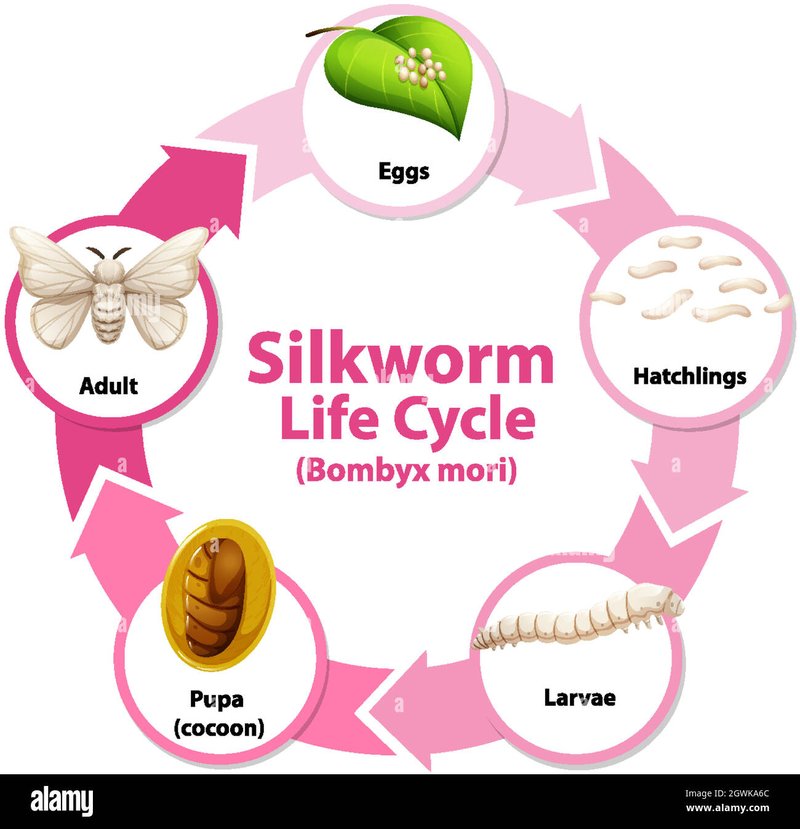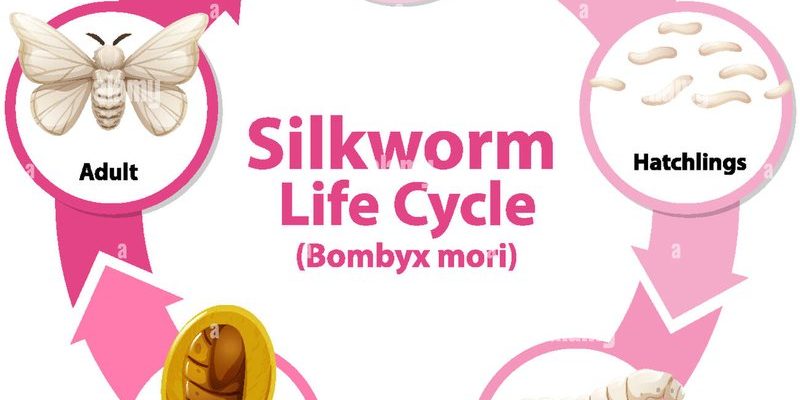
Feeding silkworm larvae is more than just tossing in some leaves and hoping for the best; it requires a bit of thought and planning. The type of leaves you use, how often you feed them, and even the environmental conditions play a significant role in their growth. Just like a well-balanced diet is important for our health, a proper feeding schedule is essential for silkworms. So, let’s dig deeper into how to keep your silkworms thriving!
Understanding Silkworm Life Stages
Before we jump into feeding schedules, it’s important to understand the life stages of silkworms. Silkworms (Bombyx mori) go through several stages, starting from eggs to larvae (which we’ll focus on), then to pupae, and finally to moths. The larvae stage is divided into several instars, which are periods between molts.
During this time, silkworms grow rapidly and require a lot of food. They can consume up to fifteen times their body weight! So, knowing how long each stage lasts helps you plan their meals effectively. Typically, the larvae will go through about five instars over a span of about 25 to 30 days. This means that as they grow, their appetite will increase dramatically, and you’ll need to adjust your feeding schedule accordingly.
Choosing the Right Food for Silkworms
The quality of food you provide will significantly impact the growth and health of your silkworms. Their primary diet consists of mulberry leaves, which are rich in the nutrients necessary for their development. If you can’t find fresh mulberry leaves, you can also use high-quality dried mulberry leaves or specially formulated silkworm pellets.
Here’s a quick breakdown of the food types:
- Fresh Mulberry Leaves: Best option loaded with nutrients!
- Dried Mulberry Leaves: Convenient, but check for quality.
- Silkworm Pellets: Good backup, but not as high in nutrients.
Make sure to wash fresh leaves thoroughly to remove any pesticides or impurities. Feeding silkworms contaminated leaves can stunt their growth or even make them sick. Keep an eye out for any changes in your silkworms’ behavior after switching food types; they might have preferences just like us!
How Often to Feed Silkworms
Now that you know what to feed your silkworms, let’s discuss how often to do it. During the early instar stages, silkworms need to be fed every 12 to 24 hours. Think of this time as a buffet; they’ll munch on those mulberry leaves whenever they can. As they transition into later instars, you may consider increasing the frequency to every 8 to 12 hours.
Here’s a simple feeding guideline:
– 1st Instar: Every 12-24 hours
– 2nd Instar: Every 12-24 hours
– 3rd Instar: Every 8-12 hours
– 4th Instar: Every 8-12 hours
– 5th Instar: Every 4-6 hours
As a tip, check their feeding trays regularly. If you notice that they’ve eaten all the leaves, it’s time for a refill! Keeping a close watch on their hunger will help ensure they grow healthy and strong.
Signs of Healthy Silkworms
You might be wondering how to tell if your feeding schedule is effective. Healthy silkworms are usually active and exhibit a vibrant color, whether they are a lovely green or off-white hue. If they seem sluggish or have darkened colors, it could indicate an issue. Common signs of distress include not eating or being overly lethargic.
Here are some additional signs to look for:
- Eating Enthusiasm: They should devour their leaves quickly.
- Growth Size: Regular growth in size is key.
- Molt Frequency: They should shed old skin regularly.
If any of these signs appear off, it might be time to revisit your feeding schedule or even check the quality of the food you offer. Just like with any living creature, keeping a close eye on their behavior can make a world of difference.
Adjusting Feeding Based on Temperature and Humidity
Believe it or not, the environment plays a huge role in how often you should feed your silkworms. Silkworms thrive in warm, humid conditions—ideal temperatures range from 25°C to 30°C (77°F to 86°F). If you live in a cooler environment, you may need to adjust your feeding habits since cold conditions can slow their metabolism.
If the temperature dips below their preferred range, they might eat less, and you won’t want to overfeed them. Conversely, during warmer weather, they might exhibit an increased appetite. Always keep the humidity levels around 65% to 85% for optimal growth. Consider using a hygrometer to monitor these levels.
Common Feeding Mistakes to Avoid
Even the most seasoned silkworm raisers can make mistakes. Here are a few common pitfalls to watch out for:
– Overfeeding: More isn’t always better! Giving too much food can lead to wasted leaves and health issues.
– Poor-Quality Food: Only feed them fresh or high-quality dried leaves. Old or moldy food can be detrimental to their health.
– Inconsistent Schedule: Sticking to a routine is key. Try to maintain a consistent feeding interval for the best growth.
Remember, raising silkworms is a learning process. Don’t be too hard on yourself if things don’t go as planned. Just keep observing, adjusting your methods, and learning along the way.
Final Thoughts on Silkworm Feeding Schedules
Feeding schedules for growing silkworm larvae might seem daunting at first, but once you get the hang of it, it can be a rewarding experience! Ensuring they get the right food at the right time sets the foundation for their growth and silk production.
By keeping a close eye on their feeding habits and environmental conditions, you can help your silkworms thrive. Remember, a little planning and observation go a long way. You’re not just feeding them; you’re nurturing them and watching them grow into beautiful creatures that will one day contribute to the world of silk. Happy raising!

